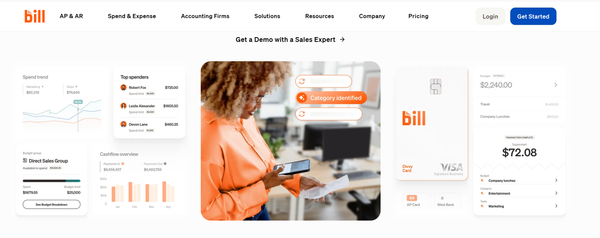How to Navigate Open Enrollment: Tips for Selecting the Right Health Plan
Explore essential tips to navigate the open enrollment period and choose the right health plan. Learn how to compare options, understand coverage, and find the best plan for your needs.

The open enrollment period is a critical time for millions of Americans as they review and select their health insurance plans for the upcoming year. Whether you're evaluating employer-sponsored plans, looking into Affordable Care Act (ACA)-compliant options, or considering Medicare Advantage, making the right decision is crucial for both your health and your finances.
With so many choices and variables, it's easy to feel overwhelmed. However, by understanding the key aspects of health insurance and following a structured approach, you can make informed decisions that best suit your needs.
This article will provide comprehensive guidance on navigating the open enrollment period, helping you to choose the most suitable health plan. We will cover the importance of understanding the types of plans available, how to evaluate costs and coverage, and the specific considerations you need to keep in mind to ensure you and your family are adequately protected.
Understanding the Open Enrollment Period
The open enrollment period is the designated time each year when individuals can enrol in or make changes to their health insurance plans. For most people, this is the only time you can change your health plan unless you qualify for a Special Enrollment Period due to a life event such as marriage, the birth of a child, or loss of other coverage.
Open enrollment for ACA-compliant health plans typically runs from November 1 to December 15, although dates can vary slightly depending on the state. Medicare open enrollment, which is specifically for those eligible for Medicare, usually occurs from October 15 to December 7.
During this period, you can:
- Enroll in a new health plan
- Switch from one plan to another
- Opt for a different type of coverage (e.g., from an HMO to a PPO)
- Add, drop, or change additional benefits like dental or vision coverage
Because your decision during open enrollment will determine your health coverage for the following year, it's important to approach this period with a clear strategy.
Types of Health Plans Available
Before diving into the specifics of choosing a plan, it's crucial to understand the different types of health insurance plans available. Each type offers different benefits, costs, and levels of flexibility, so knowing what each entails can help you make the best choice.
Health Maintenance Organization (HMO) Plans
HMO plans are often considered more affordable, but they come with certain restrictions. Under an HMO, you are required to choose a primary care physician (PCP) who will be your first point of contact for all healthcare needs. To see a specialist, you'll need a referral from your PCP. Additionally, HMOs typically require you to receive care within their network of providers, which can limit your options but also help keep costs down.
Pros:
- Lower out-of-pocket costs
- Emphasis on preventive care
- Generally lower premiums
Cons:
- Limited provider network
- Requires referrals for specialist care
Preferred Provider Organization (PPO) Plans
PPOs offer greater flexibility compared to HMOs. With a PPO, you can see any doctor or specialist without needing a referral, and you have the option to see providers outside of your plan's network, though this may come with higher costs.
Pros:
- More provider options
- No need for referrals
- Flexibility to see out-of-network doctors
Cons:
- Higher premiums and out-of-pocket costs
- Potential for higher costs when seeing out-of-network providers
Exclusive Provider Organization (EPO) Plans
EPOs are similar to HMOs in that they require you to use a network of doctors and hospitals, but like PPOs, they do not require referrals to see specialists. However, EPOs typically do not cover any out-of-network care except in emergencies.
Pros:
- Lower premiums than PPOs
- No referrals needed for specialists
- Focus on in-network care
Cons:
- No out-of-network coverage except emergencies
- Smaller provider network
Point of Service (POS) Plans
POS plans combine features of HMOs and PPOs. Like an HMO, you are required to choose a primary care physician and get referrals to see specialists. However, like a PPO, you can also see out-of-network providers, but at a higher cost.
Pros:
- More flexibility than HMOs
- Some out-of-network coverage
- Lower out-of-pocket costs if you stay within the network
Cons:
- Requires referrals for specialists
- Higher costs for out-of-network care
High-Deductible Health Plans (HDHPs) with Health Savings Accounts (HSAs)
HDHPs come with higher deductibles but lower premiums. They are often paired with Health Savings Accounts (HSAs), which allow you to save money tax-free to pay for eligible medical expenses.
Pros:
- Lower premiums
- HSA provides tax advantages
- Potential for significant savings if you are generally healthy
Cons:
- High out-of-pocket costs before the deductible is met
- Can be costly if you have significant health needs
Evaluating Costs: Premiums, Deductibles, and Out-of-Pocket Maximums
When comparing health insurance plans, it's essential to look beyond just the monthly premium. While premiums are the fixed amount you pay every month, they are just one part of the total cost of your healthcare. You should also consider deductibles, copayments, coinsurance, and out-of-pocket maximums.
Premiums
Your monthly premium is the amount you pay to keep your insurance active, regardless of whether you use any medical services. Plans with lower premiums often have higher deductibles, so they might be more suitable for people who do not expect to need a lot of medical care.
Deductibles
The deductible is the amount you pay out of pocket for healthcare services before your insurance starts to pay. For example, if your plan has a $1,500 deductible, you will need to pay $1,500 for covered services before your insurance begins to cover costs.
Plans with higher deductibles typically have lower premiums, making them a good option if you are healthy and do not expect to need much medical care. However, if you anticipate needing frequent medical services, a plan with a lower deductible might be more cost-effective in the long run.
Copayments and Coinsurance
Copayments (or copays) are the fixed amounts you pay for specific services, like a $25 fee for visiting your primary care physician. Coinsurance is the percentage of costs you pay for a covered service after you have met your deductible. For instance, if your coinsurance is 20%, and you have met your deductible, you will pay 20% of the cost of your medical bills while the insurance company pays the remaining 80%.
These costs can add up, so it's important to factor them into your decision when choosing a plan.
Out-of-Pocket Maximum
The out-of-pocket maximum is the most you will have to pay for covered services in a plan year. After you reach this limit, your insurance will pay 100% of the costs for covered benefits. When comparing plans, consider how much you're comfortable paying out of pocket in a worst-case scenario.
Considering Your Health Needs
Your personal and family health needs should play a central role in your decision-making process during open enrollment. Here are some key considerations:
Coverage for Pre-Existing Conditions
If you or a family member has a pre-existing condition, make sure the plan you choose provides adequate coverage. All ACA-compliant plans are required to cover pre-existing conditions, so if you're opting for an ACA plan, you won't have to worry about exclusions. However, some short-term or temporary health coverage options may not cover pre-existing conditions, so it's crucial to read the plan details carefully.
Prescription Drug Coverage
If you take prescription medications regularly, ensure that the plan you choose offers adequate prescription drug coverage. Check the plan's formulary (the list of covered drugs) to see if your medications are included and what the copayment or coinsurance costs will be.
Preventive Care
Most health plans, especially those that are ACA-compliant, cover preventive care services like vaccines, screenings, and annual check-ups at no additional cost. If preventive care is important to you, make sure your plan includes comprehensive coverage for these services.
Specialists and Network Considerations
If you or a family member needs to see specialists regularly, you'll want a plan that provides access to the specialists you need. Consider whether you prefer the flexibility of a PPO, which allows you to see specialists without a referral, or if you're comfortable with an HMO that requires referrals and offers lower costs.
Additionally, make sure your preferred doctors and hospitals are in the plan's network. Out-of-network care can be significantly more expensive, and some plans do not cover out-of-network care at all.
Comparing Plan Options
Once you have a clear understanding of your health needs and the types of plans available, it's time to compare specific plan options. Health insurance comparison tools, like those offered by HealthPlansAmerica.org, allow you to compare different plans side by side, looking at costs, coverage, and other key factors.
Using Health Insurance Quotes
One of the most effective ways to compare plans is by getting health insurance quotes. These quotes provide detailed information about the premiums, deductibles, and coverage options for each plan, allowing you to compare them easily. Make sure to get quotes for a variety of plans, including HMOs, PPOs, and high-deductible plans, to find the one that best meets your needs.
Navigating open enrollment can be overwhelming, but with the right approach, you can select a health plan that truly meets your needs. From understanding your options to evaluating costs and coverage, these tips are designed to guide you through the process with confidence. Taking the time to carefully review your choices now can make a significant difference in your health and financial well-being throughout the year.
How about you? What challenges have you faced during open enrollment, and what tips have helped you choose the right health plan? We’d love to hear your insights in the comments below.
If you found this guide helpful, consider sharing it with your friends and followers—let’s ensure everyone has the information they need to make informed decisions this open enrollment season. Don’t forget to connect with us on social media for more expert advice and updates. Plus, subscribe to our newsletter to receive the latest tips, trends, and exclusive offers directly to your inbox!
#OpenEnrollment #HealthInsurance #SmartChoices #ShareTheKnowledge #BloomclicksConnect





